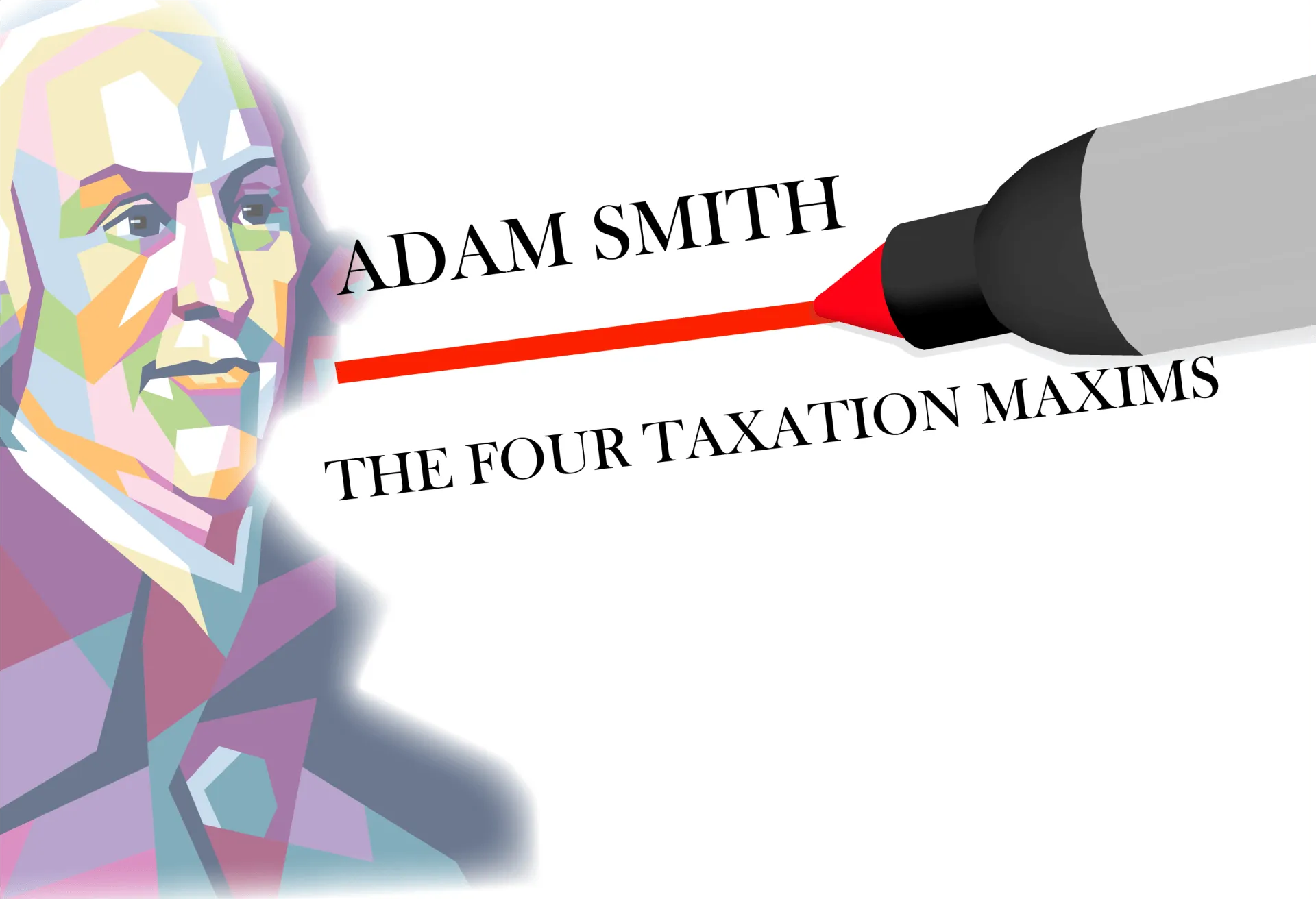The Introduction of Corporate Income Tax: An Act of Infringements or Benevolence
Abstract
Since Adam Smith (1776) argued that taxation should follow the four principles: fairness, certainty, convenience, and efficiency, policymakers, economists, and tax experts have been debating as to how to make the tax system fairer to all. The general feeling among many is that corporations should pay tax because they benefit from the infrastructure of a country, and there are equitable, practical, and political reasons why they should pay tax but how much, remains debatable. However, some consider corporation tax to be the most economic distortive tax, therefore, it should be kept to a minimum, or even eliminated. While others are concerned that some companies (especially multinationals) are not paying their fair share and how to make the playing field equitable. The challenge for the governments is to design a tax system that supports investment and also, reduces the total tax burden of corporations. The evidence provided below suggests that the corporation tax is not an infringement on society but is benevolence.
- Introduction
In the early days, there were no corporations and no limited liability companies, so there was no corporate tax. The business ownership model was predominantly sole proprietorship and/or partnership. In this form of business, it is impossible to divide the income earned into: (i) the income attributable to the labor; and (ii) the one attributable to capital. As a result, partnership firms’ income was directly imputed at the individual level and taxed accordingly. In addition, the tax was levied on the total income regardless of whether it was retained or it was distributed.
The formation of corporations has led to the number of shareholders increasing into millions, where the same shareholders could also be shareholders of other corporations and shares could also be owned by foreign shareholders, as well. Due to the sheer complexity, it was impossible to impute the income to the shareholders. The treatment of corporations as separate legal entities has enabled taxing profits at the corporate level. Consequently, some corporations based on their formation, are taxed on the income that they make, whereas others are charged tax on the dividend, which is distributed.
The corporate tax was first introduced in the US in 1894, which was immediately challenged in court and was found to be unconstitutional. Corporate tax continued to be a discussion in varying degrees, corporate tax was reintroduced in 1913, starting with an abysmally low tax rate at 1%, within a decade, the tax rate has grown to 15%.
During World War 2, the corporate tax was a single contributor to the US budget, contributing close to 20% of the total revenue of the US government. In 1968, the US tax rate peaked over 50% – the highest. The corporate tax debate continued as a feeling among the pundits was that the statutory corporate tax rate is one of the highest in the industrialized world. Although the top corporate tax rate was 52% throughout the Eisenhower administration—31% points higher than the current corporate tax rate of 21%, the US GDP grew by almost 4% annually in the 1950s compared with a 1.8% growth rate in the 2000s. Corporate profits remained relatively high throughout the late 1940s and 1950s, and fell throughout the 1960s and 1970s, reaching low in 1982. Since then, corporate profits in the US have taken a reverse course and rising high as the postwar levels. The next section provides discussion on the types of taxes corporates pay, the evidence of whether robust economic growth is associated with higher corporate tax rates, the statutory top corporate tax rate, or the effective marginal tax rate on capital income is correlated with real GDP growth.
2. Discussion
Adam Smith (1776), in The Wealth of Nations, argued that taxation should follow the four principles: fairness, certainty, convenience, and efficiency. Although economists and tax experts agree that corporations should pay tax because they benefit from the infrastructure of a country, and there are equitable, practical, and political reasons why they should pay tax but how much, remains debatable. However, some consider corporation tax to be the most economic distortive tax, therefore, it should be kept to a minimum, or even eliminated. They argue that the cost of corporation tax is incurred mostly by the shareholders, employees, or customers. In addition, corporations’ tax reduces investment and economic output. Furthermore, there is an argument that businesses pay far more than just corporate or business tax. Also, there is concern among many that some companies (especially multinationals) are not paying their fair share and how to make the playing field equitable. There is a challenge for governments to design a tax system that supports investment and also, reduces the total tax burden of corporations.
According to OECD (2019), the average global average corporate tax rates of 88 countries have fallen from as high as 40%-50% in the 1980s to 21.4% in 2018. This partly was driven by the view that lower tax rates encourage inward investment and enterprise generally. In addition, Cevik and Miryugin (2019) show that higher effective marginal tax rates lead to a greater chance of a company failing financially.
Although average tax rates have fallen, the percentage of corporation tax, to both the total tax take and GDP, has increased globally as countries have broadened their tax base. According to OECD (2019), corporation tax rose from 12% of the total tax taken in 2000 to 13.3% in 2016, and from 2.7% to 3% of GDP. According to Hungerford (2013), the corporate income tax has three important functions. First, it raises a significant amount of revenue for the government. Second, the corporate income tax contributes to the overall progressivity of the tax system to the extent that the corporate tax burden falls on capital. In practice, many tax policy analysts and government agencies distribute the majority of the corporate tax burden to capital (between 75 percent and 82 percent). This evidence supports the view that corporate income tax contributes to the progressivity of the overall tax system. Third, the corporate income tax serves as a backstop to the individual income tax because it precludes using the corporation as a tax shelter for high-income taxpayers. In support, Gravelle and Hungerford (2008) state that “if there were no corporate tax, high-income individuals could channel funds into corporations and, with a large part of earnings retained, obtain lower tax rates than if they operated in partnership or proprietorship form” (p. 422).
2.1 Types of Corporate Tax
Corporations are obliged to pay both direct and indirect taxes. Direct tax is a tax on the fractions of corporate income which usually is progressive, that is, average tax rates rise with income, typically reaching a maximum rate. The corporations also have to pay indirect taxes which include sales taxes, value-added taxes, excise taxes, property taxes, payroll taxes, and import and export duties. All governments need stable sources of revenue to provide the social goods expected by their people. While the corporate tax rate is important, McCormick and Morgan (2020) argue that it is not the key driver of investment. A study on Innovation and Research and Development has undertaken by IMF in 2016 suggests that a 40% increase in R&D spending by companies in developed countries could lead to an increase in GDP of 5%. Although prior studies (IMF, 2015) suggest the effective tax burden does have an impact on foreign direct investment (FDI), governments need to be clear that incentives are well-targeted and benefits can be measured. Evidence also shows that tax is not as important in attracting FDI to developing countries as for developed countries.
European Business Tax Forum in December 2019 sponsored a study on total tax contribution by the largest companies in European Union (EU) and European Free Trade Association (EFTA), the results show that the largest 41 companies incurred other taxes of €1.41 for every €1 of income tax paid. The other taxes or non-income taxes include a tax on production, people, property, and environmental impact. These are the direct cost of doing business – as opposed to taxes collected but not borne by the business, such as VAT and employee income tax. This report estimates that there are €6.72 of taxes collected by the top 41 companies for every €1 of income tax borne. In addition, corporations incur customs duties (taxes on imports) (depending on the countries and goods or services involved and whether free trade agreements apply). Furceri, et al. (2019) state that tariff increases lead to economically declining domestic output and productivity. Furthermore, tariff increases also result in more unemployment, higher inequality, and real exchange rate appreciation, but only small effects on the trade balance. This effect has less impact in poorer countries, which does support the argument for keeping tariffs where they are an essential part of government finance.
2.2 Does corporate tax affect corporate profitability
A study undertaken in the US by Barkai and Bensell (2018) shows that the profit share has declined between 1946 to the early 1980s, and has been increasing ever since. As a share of gross value added, profits today are higher than they were in 1984 but lower than their value in the years after World War II. Before-tax corporate profits (excluding the profits of the Federal Reserve banks) have averaged 10.5% of national income since the end of World War II. In 2012, before-tax profits were equal to 13.6% of national income. Even in the depths of the Great Recession, corporate profits (9.6% of national income in 2008) were not far from their historical average. The trend in after-tax corporate profits as a percentage of national income between 1947 and 2012 was on an average of 7.4 %. In 2012, after-tax profits were equal to 11.4% of national income. Most noticeably, after-tax profits since 2000 have generally been higher than after-tax profits in the 1950s. The gap between before-tax and after-tax corporate profits (as a percentage of national income) was 4% to 5% points throughout the 1950s and most of the 1960s—reaching a high of 7% points in 1951. The gap has narrowed considerably since the early 1980s and was at a low of 1.3% points in 2009 (Hungerford, 2013). This evidence suggests that corporate profitability was not impacted by corporate tax.
2.2 Does Corporate Tax Affect economic growth
The US economy grew at an annual average rate of 3.9% between 1950 and 1960, when the statutory corporate tax rate was over 50 percent. Between 2000 and 2010, the statutory corporate tax rate was 35% (over 15% points lower than the rate in the 1950s), and annual economic growth averaged 1.8% (less than half of the growth rate in the 1950s). With its ups and downs since 1947, real GDP growth fluctuated around a downward trend. The tax rate leveled at about 52% to 53% in the 1950s and 1960s, fell to 35%. This evidence suggests there is a positive association between GDP growth and corporate tax rates. Gravelle (1994) argues that the statutory corporate tax rate does not capture the tax burden on new investment. Therefore, Gravelle uses the effective marginal tax rate on earnings from investment and shows an overall downward trend between 1953 and 2005. Some argue that the corporate tax rate affects economic growth with a lag. Hungerford (2012) explored the lag effect and found that the estimated correlation is not statistically significant, thus suggesting that there is no apparent association between the statutory corporate tax rate and economic growth.
2.3 Does Corporate Rate Rate deter investment
McCormick and Morgan (2020), have undertaken many surveys where results show that businesses value other factors – such as political stability and access to labor and markets – above tax incentives when deciding where to invest. Stability and certainty in the tax rate are usually prioritized over a low headline rate. Therefore, while the corporate tax rate is important, it is not the key driver of investment. A study was undertaken by IMF (2015) argues that a good revenue system needs to adopt taxation policies that are simple, fair, and efficient. Giving tax incentives to attract FDIs may risk compromising good “principles to the extent that they complicate the tax system, create horizontal inequities, and distort production efficiency; and they may forgo revenue that could have been spent more productively or needs to be replaced in other and more damaging ways” p.6). With the declining global trend in corporate income tax (CIT) rates, including in LICs, the benefit of receiving tax incentives has somewhat diminished.
3. Conclusion
Corporate tax reform is a topic of discussion among policy analysts and policymakers. The proposed options range from broadening the tax base/lowering the rates to moving to a territorial system with low tax rates to outright elimination of the corporate income tax. Given that the corporate income tax serves several important functions, outright elimination of the tax is not advisable. The justification for lowering the corporate tax rate is that it will increase economic growth. There is evidence that corporates should pay tax but need to reduce the effect of non-direct taxes as it does affect profitability.
Based on the views presented above, it is evident that corporation tax is not an infringement but benevolence to building an equitable society.
References
Barkai, S. & Benzell, S. G. (2018). 70 years of corporate profits. Stigler Center for the Study of the Economy and the State. Accessed on 23 February 2022 from https://research.chicagobooth.edu/stigler/research//media/8ee68ec563aa4c70aa94897ee04f68b6
Bowley, G. (2012). “The Corporate Tax Games,” New York Times, May 3, 2013, p. B1.
Cevik, S. & Miryugin, F. (2019). Death and Taxation: Does Taxation Matter for Firm Survival? Economics & Politics. https://doi.org/10.1111/ecpo.12188
Congressional Budget Office. (2012). The Changing Distribution of Federal Taxes: 1975-1990. CBO Study, Washington, DC. Accessed on 23 February 2022 from https://www.cbo.gov/sites/default/files/112th-congress-2011-2012/reports/43373-averagetaxratesscreen.pdf
Cronin, J-A., Lin, E., Power, L., & Cooper. M. (2012). Distributing the Corporate Income Tax: Revised U.S. Treasury Methodology. OTA Technical Paper 5. Washington, DC: U.S. Department of the Treasury. Accessed on 23 February 2022 from https://home.treasury.gov/system/files/131/TP-5.pdf
Furceri, D., Hannan, S. A., Ostry, J. D., & Rose, A. K. (2019). Macroeconomic Consequences of Tariffs. IMF Working Paper WP/19/9, Washington: IMF. Accessed on 25 February 2022 from
Gravelle, J. G. (2006). Historical effective marginal tax rate on capital. Congressional Research Service report RS21706. Accessed on 24 February 2022 from https://crsreports.congress.gov/product/pdf/RS/RS21706/6
Gravelle, J. G. (2012), however, shows that the effective U.S. corporate tax rate is not much different from the OECD average (weighted by GDP).
Gravelle, J. G., & Hungerford, T. L. (2008). Corporate Tax Reform: Should We Really Believe the Research? Tax Notes, vol. 121, no. 4, 419–438.
Hodge, A. W. (2011). Company NIPA Profits with S&P500 Profits. Accessed on 24 February 2022 from https://apps.bea.gov/scb/pdf/2011/03%20march/0311_profits.pdf
Hungerford, T. L. (2012). Taxes and the Economy: An Economic Analysis of the Top Tax Rates Since 1945. Congressional Research Service report R42729. http://graphics8.nytimes.com/news/business/0915taxesandeconomy.pdf.
Hungerford, T. L. (2013). Corporate tax rates and economic growth since 1947. Economic Policy Institute. Washington. Accessed on 23 February 2022 from https://www.epi.org/publication/ib364-corporate-tax-rates-and-economic-growth/
International Monetary Fund. (2016). Chapter 2: Fiscal Policies for Innovation and Growth. Washington: IMF.
_____ (2015), Options for low-income countries’ effective and efficient use of tax incentives for investment. A report to the G-20 Dedevelopment Working Group by the IMF, OECD, UN and World Bank. Washington: IMF. Accessed on 25 February 2022 from https://www.imf.org/external/np/g20/pdf/101515.pdf
McCormick, J. & Morgan, C. (2020). Is corporation tax good or bad for growth? Economic Forum. Downloaded on 22 February 2022 from https://www.weforum.org/agenda/2020/01/corporation-tax-good-or-bad-for-growth/
Nunns, J. (2012). How TPC Distributes the Corporate Income Tax. Tax Policy Center, Urban Institute and Institution. Accessed on 23 February 2022 from https://www.urban.org/sites/default/files/publication/25796/412651-How-TPC-Distributes-the-Corporate-Income-Tax.PDF
OECD (2019). Tax Statistics. OECD. Accessed on 23 February 2022 from https://www.oecd.org/tax/tax-policy/corporate-tax-statistics-database-first-edition.pdf








